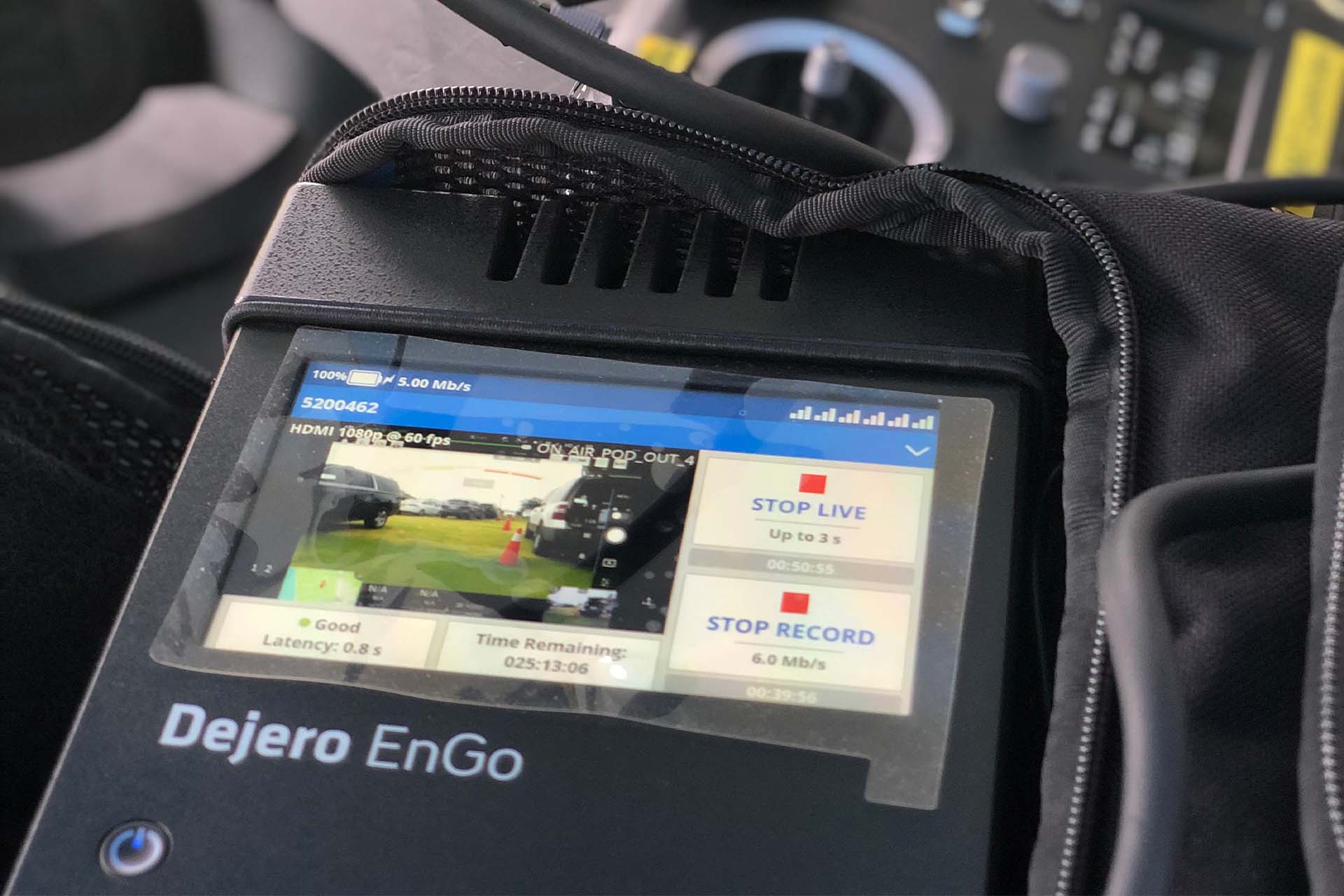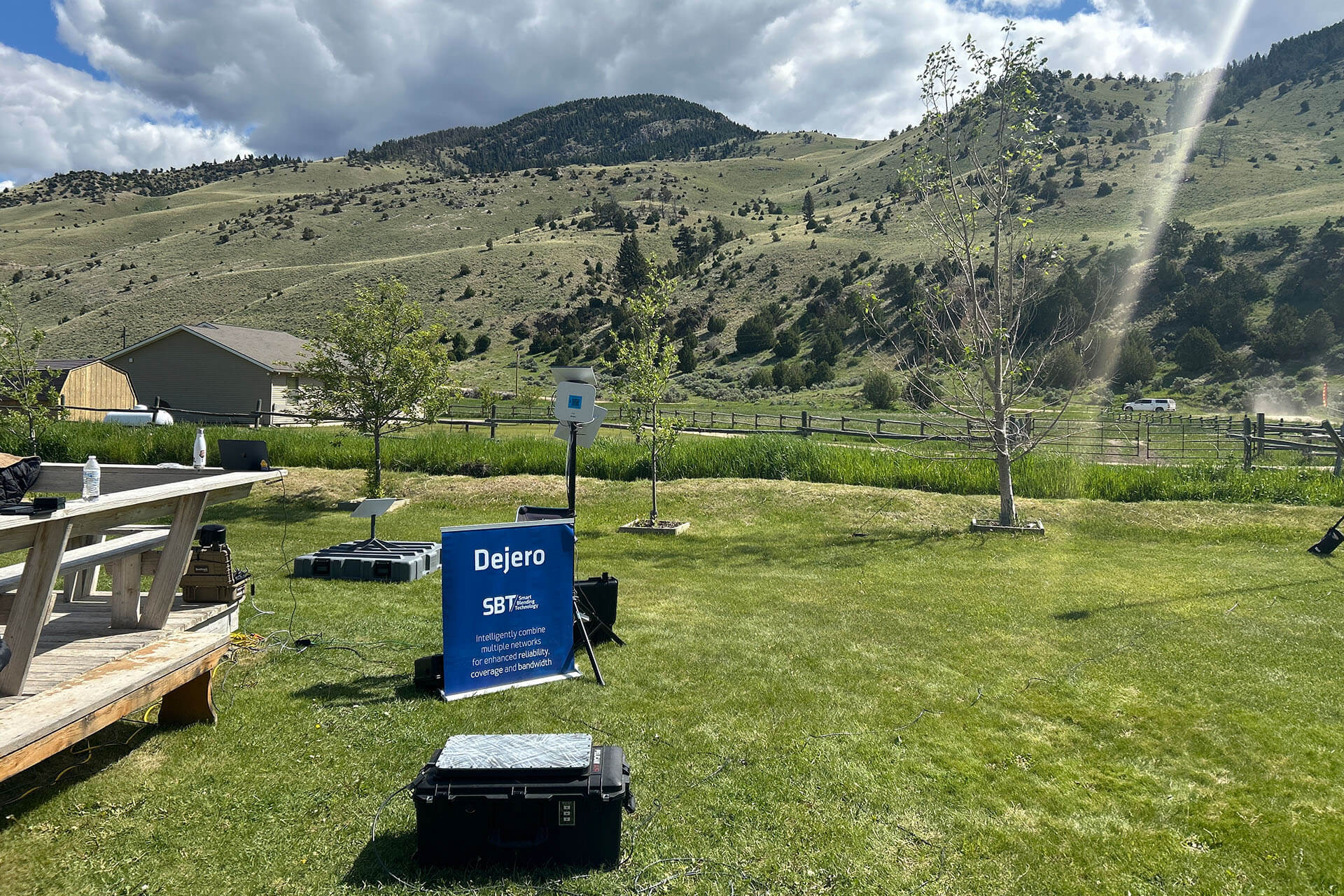Look up. What do you see?
For those of us on the ground, the sky is not only full of wonder. It’s also full of potential.
Advances in satellite technology and 5G are providing even more opportunities for remote broadcasters and field reporters to access reliable backhaul from increasingly remote locations. But it is still very difficult for carriers and providers to be everywhere.
With 4G LTE infrastructures being used around most parts of the world, service providers are still working towards delivering standalone 5G. This is tempered by the enormous growth of satellite capacity including Low Earth Orbiting (LEO) satellites, MEO (Mid Earth Orbit) and GEO (Geostationary Earth Orbit). While LEO satellites operate in a low Earth orbit, MEO and GEO satellites have wider orbits, different coverage areas and longer latencies.
It’s a numbers game
Access to all satellite coverage has literally gone through the stratosphere, and the multitude of service providers offer choice. Eutelsat, OneWeb and Viasat are providers marketing reliable coverage solutions. Even Amazon is making headlines with its Kuiper project.
But Starlink is the name most people associate with low-latency satellite connectivity - and with good reason. It all comes down to the numbers.
Starlink LEO satellites are much better suited to real-time applications such as live broadcast. They operate at a much lower atmospheric level, enabling a latency of less than 20ms with much higher throughput. A LEO Starlink satellite is capable of making 70 roundtrips around the Earth in the same time it takes a GEO satellite to make the same journey.
On the other hand, their relatively low orbit means that they orbit the Earth multiple times every day, and as each satellite passes overhead another must follow to guarantee consistent coverage.
This is Starlink’s strength.
As part of the SpaceX program, Starlink provides the biggest operational constellation of satellites in the world. By November 2023, reports estimate 5,420 Starlink satellites in orbit around the Earth, and with regular SpaceX flights delivering more into the atmosphere every month, it is on track to deliver on its promise to deliver a low-latency mesh of 12,000 satellites across the planet1.
More connectivity means more reliable coverage
While this is great news for people to access the internet in rural and isolated areas, for Dejero it is much more than that.
Dejero first incorporated Starlink into its Smart Blending Technology™ in 2022, combining Starlink’s LEO satellite connectivity with cellular connectivity to guarantee reliable broadcast backhaul for the funeral of Queen Elizabeth II. Using Dejero GateWay network aggregation devices, the Queen’s funeral was the first time a live broadcast had ever blended Starlink and cellular together in that way. By aggregating all available networks, Dejero managed fluctuating connectivity to minimise the latency of satellite-only connectivity as well as enabling our broadcast customers to go live-to-air from an area with major cellular congestion.
In addition, most carriers and internet service providers tend to develop coverage around large populations; deploying satellite networks can help augment service levels in more remote locations too. This can be invaluable for broadcasters covering breaking news in more challenged environments.
LEO satellites offer another connection that can be blended using Dejero Smart Blending Technology, which dynamically manages bandwidth, packet loss, and latency across multiple connections in real-time to create a network of networks. Blending satellite connectivity with broadband, fiber, 3G/4G/5G and IP connections helps us deliver more reliable coverage and greater bandwidth than ever before.
Line of sight
But the addition of Starlink to Dejero’s award-winning technology not only helps guarantee premium connectivity in these rural and remote locations; it can service populous areas too.
Our customers tell us that one connection is never enough, and aggregating multiple connection paths can also protect customers in locations where communities have been affected by floods, fires or hurricanes, power outages can severely limit access to a variety of connectivity options.
For Dejero, the addition of satellite connectivity is adding another layer of assurance. It’s not only consistent, but you don't need any ground infrastructure to access it. You just need localized power.
Challenges
That’s not to say there aren’t any challenges to overcome, and one of Dejero’s priorities is to maintain relationships with all the main players. ISP networks are built for regular internet traffic, which means that there is always more focus on download speeds to optimize the gathering of data from the internet.
At Dejero, we want to make sure that we optimize upload speed as well. Our broadcast customers are looking for consistent and secure upload speeds to deliver the sharpest video.
Users also need to be aware of regional differences in network capacity; the performance of a LEO constellation in Europe differs to performance levels in Asia or the U.S., while different satellite networks all have nuances of their own. It’s important to note that there are varying tiers of service available and networks are adding new and improved features all the time. As these services evolve, what we can expect from them will certainly change.
Our focus when it comes to incorporating satellite connectivity into our Smart Blending Technology, is to work with service providers to stay ahead of these nuances, because although there are significant benefits to be had, our mission to provide critical connectivity is paramount.
More tools in the toolbox
The development of LEO networks like Starlink means that more people are achieving better access in more locations, and with more satellites launched into the atmosphere every month, it shows no sign of stopping.
For us, it is another way to help our customers to leverage all available connectivity options.

1 Number of Starlink satellites 2019-2023 | Statista











